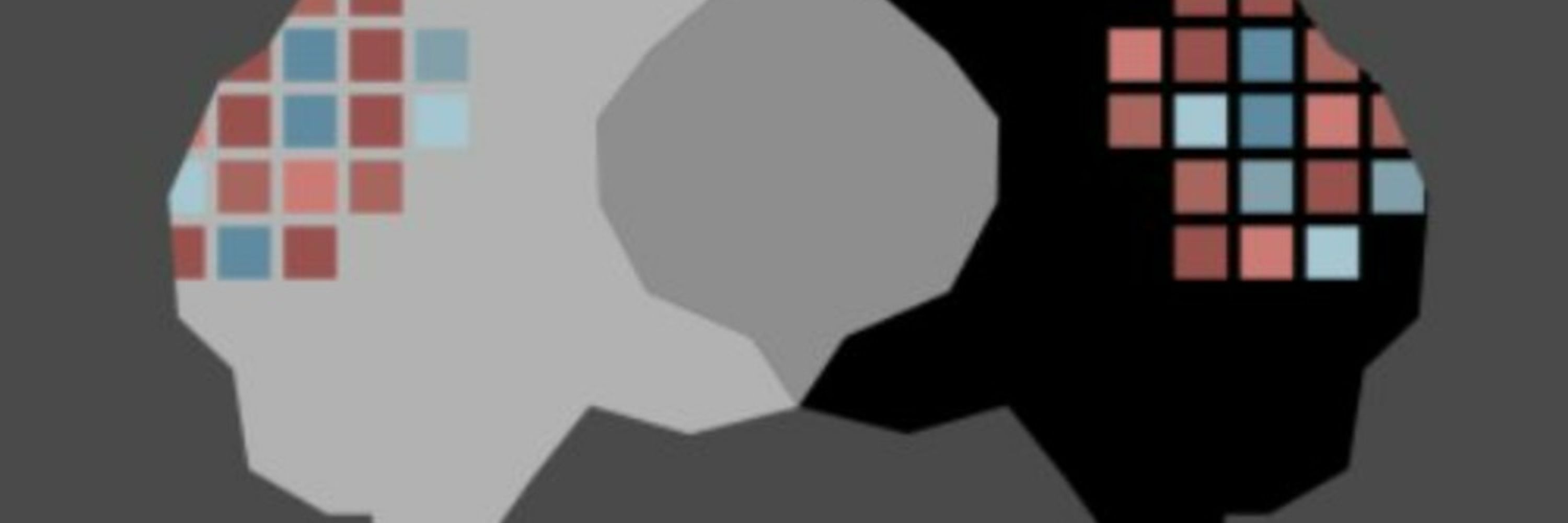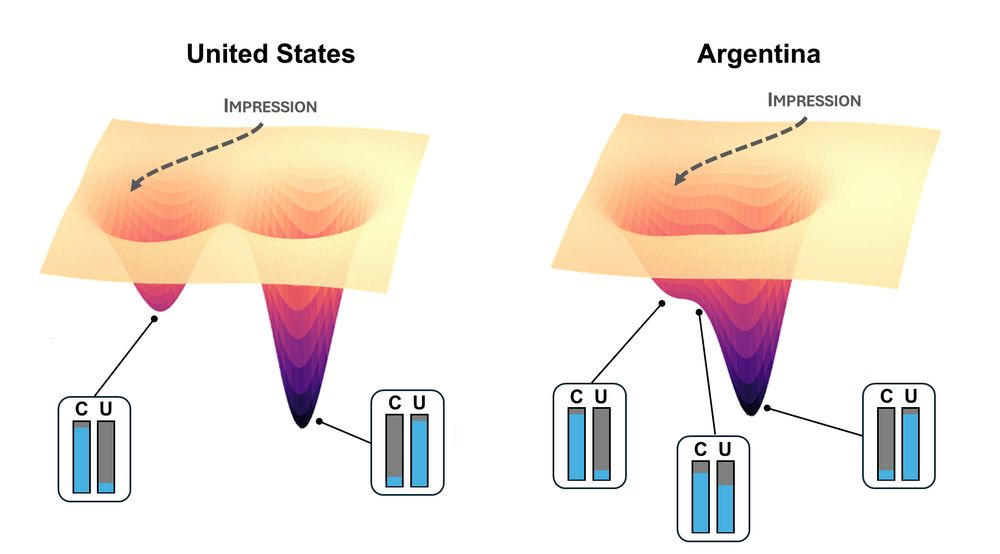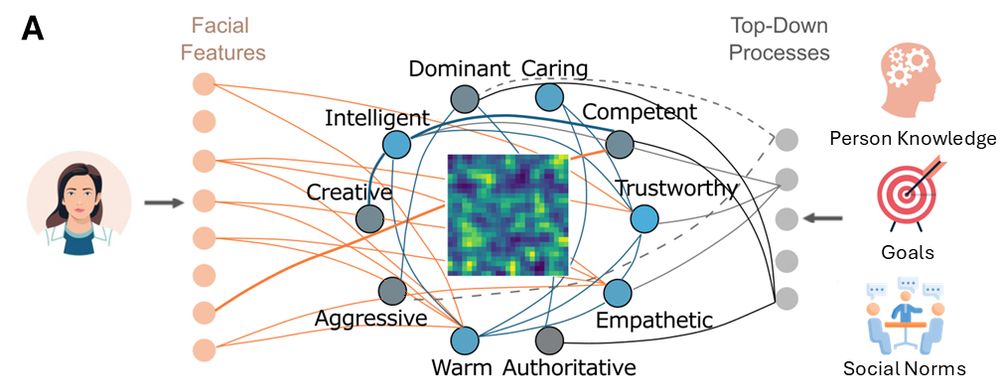
Jon Freeman
@freemanjb.bsky.social
associate professor of psychology and social neuroscientist at columbia | person perception and social cognition | data equity | 🏳️🌈
Refusing to release the requested data on how these questions performed undermines the Census Bureau’s scientific integrity and prevents accountability when LGBTQ+ communities are left invisible. (4/4)
September 23, 2025 at 4:59 PM
Refusing to release the requested data on how these questions performed undermines the Census Bureau’s scientific integrity and prevents accountability when LGBTQ+ communities are left invisible. (4/4)
Congress allocated $10 million, the Census Bureau tested nearly half a million households, and now the results are being unlawfully suppressed. (3/4)
September 23, 2025 at 4:59 PM
Congress allocated $10 million, the Census Bureau tested nearly half a million households, and now the results are being unlawfully suppressed. (3/4)
Policymakers, researchers, and multiple federal agencies requested this testing to help enforce civil rights and better understand and address disparities in health, education, employment, and other areas affecting LGBTQ+ Americans. (2/4)
September 23, 2025 at 4:59 PM
Policymakers, researchers, and multiple federal agencies requested this testing to help enforce civil rights and better understand and address disparities in health, education, employment, and other areas affecting LGBTQ+ Americans. (2/4)
The results open a path for new interventions that don’t just target stereotypes but also attempt to recalibrate biased visual perception directly, with the hopes of mitigating such high-stakes misjudgments under stress and uncertainty.
(6/6)
(6/6)
September 19, 2025 at 3:19 PM
The results open a path for new interventions that don’t just target stereotypes but also attempt to recalibrate biased visual perception directly, with the hopes of mitigating such high-stakes misjudgments under stress and uncertainty.
(6/6)
(6/6)
While past work has generally assumed such weapon-identification biases involve an accurate perception of the object but then a racially biased impulse that is difficult to control, our findings suggest that part of the problem is a temporary visual distortion as well.
(5/6)
(5/6)
September 19, 2025 at 3:19 PM
While past work has generally assumed such weapon-identification biases involve an accurate perception of the object but then a racially biased impulse that is difficult to control, our findings suggest that part of the problem is a temporary visual distortion as well.
(5/6)
(5/6)
These neural representational shifts predicted subjects' delays in recognizing these tools as tools, rather than weapons, suggesting an initial tendency to perceive them as weapons.
(4/6)
(4/6)
September 19, 2025 at 3:19 PM
These neural representational shifts predicted subjects' delays in recognizing these tools as tools, rather than weapons, suggesting an initial tendency to perceive them as weapons.
(4/6)
(4/6)
Using neural decoding techniques, we find that when subjects saw a Black man’s face before an image of a tool, their brain’s object-processing regions shifted toward a weapon-like representation.
(3/6)
(3/6)
September 19, 2025 at 3:19 PM
Using neural decoding techniques, we find that when subjects saw a Black man’s face before an image of a tool, their brain’s object-processing regions shifted toward a weapon-like representation.
(3/6)
(3/6)
Unarmed Black people in the US are 3X more likely than unarmed White people to be shot and killed by police. In many tragic cases, unarmed Black men were holding innocuous objects like a wrench, wallet, or cell phone when fatally shot by an officer.
(2/6)
(2/6)
September 19, 2025 at 3:19 PM
Unarmed Black people in the US are 3X more likely than unarmed White people to be shot and killed by police. In many tragic cases, unarmed Black men were holding innocuous objects like a wrench, wallet, or cell phone when fatally shot by an officer.
(2/6)
(2/6)
Reposted by Jon Freeman
Three @spspnews.bsky.social members will discuss their grant terminations and next steps, followed by Q&A, story sharing, and community discussion.
Moderator: Cynthia L. Pickett, Professor; Past SPSP President
Speakers: @lkfazio.bsky.social, @freemanjb.bsky.social, and @frankikung.bsky.social
Moderator: Cynthia L. Pickett, Professor; Past SPSP President
Speakers: @lkfazio.bsky.social, @freemanjb.bsky.social, and @frankikung.bsky.social
September 9, 2025 at 6:48 PM
Three @spspnews.bsky.social members will discuss their grant terminations and next steps, followed by Q&A, story sharing, and community discussion.
Moderator: Cynthia L. Pickett, Professor; Past SPSP President
Speakers: @lkfazio.bsky.social, @freemanjb.bsky.social, and @frankikung.bsky.social
Moderator: Cynthia L. Pickett, Professor; Past SPSP President
Speakers: @lkfazio.bsky.social, @freemanjb.bsky.social, and @frankikung.bsky.social
Curious for any reactions/feedback!
June 19, 2025 at 1:58 AM
Curious for any reactions/feedback!
We think it's important to view impressions not so much as drawing on a fixed low-dimensional structure but as emerging in a combinatorial fashion out of the dynamics of a high-dimensional space. This approach may also be valuable for thinking about other dimensional models in social cognition (8/8)
June 18, 2025 at 9:58 PM
We think it's important to view impressions not so much as drawing on a fixed low-dimensional structure but as emerging in a combinatorial fashion out of the dynamics of a high-dimensional space. This approach may also be valuable for thinking about other dimensional models in social cognition (8/8)
The model can explain growing findings:
▪️cross-cultural & individual perceiver variation
▪️variation by targets' race/gender/groups
And makes novel predictions:
▪️"proximal" vs. "distal" traits in cascades (competent → intelligent → creative)
▪️earlier activation of putatively latent dimensions (7/8)
▪️cross-cultural & individual perceiver variation
▪️variation by targets' race/gender/groups
And makes novel predictions:
▪️"proximal" vs. "distal" traits in cascades (competent → intelligent → creative)
▪️earlier activation of putatively latent dimensions (7/8)

June 18, 2025 at 9:58 PM
The model can explain growing findings:
▪️cross-cultural & individual perceiver variation
▪️variation by targets' race/gender/groups
And makes novel predictions:
▪️"proximal" vs. "distal" traits in cascades (competent → intelligent → creative)
▪️earlier activation of putatively latent dimensions (7/8)
▪️cross-cultural & individual perceiver variation
▪️variation by targets' race/gender/groups
And makes novel predictions:
▪️"proximal" vs. "distal" traits in cascades (competent → intelligent → creative)
▪️earlier activation of putatively latent dimensions (7/8)
In the model, the structure of trait relationships (e.g., trustworthiness–dominance) can change due to targets or context and cultural and individual learning. Top-down factors—like goals, stereotypes, or attention—reshape the attractor landscape, influencing which traits become most stable. (6/8)

June 18, 2025 at 9:58 PM
In the model, the structure of trait relationships (e.g., trustworthiness–dominance) can change due to targets or context and cultural and individual learning. Top-down factors—like goals, stereotypes, or attention—reshape the attractor landscape, influencing which traits become most stable. (6/8)
Here the trustworthiness/warmth dimension isn’t a latent mechanism or have a privileged functional/cognitive status—it’s an emergent pattern from correlated traits. That’s why it appears in PCA or factor analysis. But we argue that it’s only a mere snapshot of a fluid, high-dimensional space (5/8)
June 18, 2025 at 9:58 PM
Here the trustworthiness/warmth dimension isn’t a latent mechanism or have a privileged functional/cognitive status—it’s an emergent pattern from correlated traits. That’s why it appears in PCA or factor analysis. But we argue that it’s only a mere snapshot of a fluid, high-dimensional space (5/8)
How does it work? You encounter another person. Features trigger many trait concepts (e.g., sociable, caring, competent), which activate each other or compete, influenced by top-down goals & higher-order processes. The network settles into a stable neural pattern, resulting in impressions. (4/8)

June 18, 2025 at 9:58 PM
How does it work? You encounter another person. Features trigger many trait concepts (e.g., sociable, caring, competent), which activate each other or compete, influenced by top-down goals & higher-order processes. The network settles into a stable neural pattern, resulting in impressions. (4/8)
Instead, using attractor neural networks, we propose a high-dimensional model. In the brain, social impressions would operate as dynamic trajectories in a neural-state space that can be shaped by sensory cues, conceptual associations, and higher-order social cognition.
(3/8)
(3/8)

June 18, 2025 at 9:58 PM
Instead, using attractor neural networks, we propose a high-dimensional model. In the brain, social impressions would operate as dynamic trajectories in a neural-state space that can be shaped by sensory cues, conceptual associations, and higher-order social cognition.
(3/8)
(3/8)
How do we infer countless traits? Models have treated trait perception like color vision: impressions arise from combinations of, e.g., “red” (trustworthy), “green” (dominant), & "blue" (youthful). But unlike color, there’s no evidence for this, and we question the value of latent dimensions (2/8)

June 18, 2025 at 9:58 PM
How do we infer countless traits? Models have treated trait perception like color vision: impressions arise from combinations of, e.g., “red” (trustworthy), “green” (dominant), & "blue" (youthful). But unlike color, there’s no evidence for this, and we question the value of latent dimensions (2/8)

